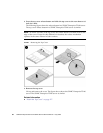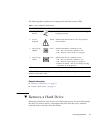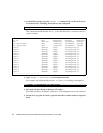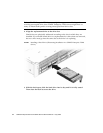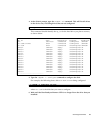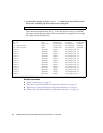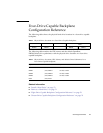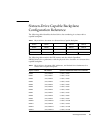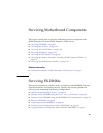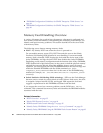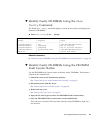
76 SPARC Enterprise T5140 and T5240 Servers Service Manual • July 2009
7. At the Solaris prompt, type the cfgadm -al command to list all drives in the
device tree, including any drives that are not configured.
This command should identify the Ap_id for the hard drive that you installed.
The output should indicate that the drive you installed is configured. For example,
the output should look like this:
Related Information
■ “Install a Hard Drive” on page 73
■ “Four-Drive Capable Backplane Configuration Reference” on page 77
■ “Eight-Drive Capable Backplane Configuration Reference” on page 78
■ “Sixteen-Drive Capable Backplane Configuration Reference” on page 79
# cfgadm -al
Ap_id Type Receptacle Occupant Condition
c0 scsi-bus connected configured unknown
c0::dsk/c1t0d0 disk connected configured unknown
c0::dsk/c1t1d0 disk connected configured unknown
usb0/1 unknown empty unconfigured ok
usb0/2 unknown empty unconfigured ok
usb0/3 unknown empty unconfigured ok
usb1/1 unknown empty unconfigured ok
usb1/2 unknown empty unconfigured ok
usb1/3 unknown empty unconfigured ok
usb2/1 unknown empty unconfigured ok
usb2/2 unknown empty unconfigured ok
usb2/3 unknown empty unconfigured ok
usb2/4 unknown empty unconfigured ok
usb2/5 unknown empty unconfigured ok
usb2/6 unknown empty unconfigured ok
usb2/7 unknown empty unconfigured ok
usb2/8 unknown empty unconfigured ok
----------------------------



